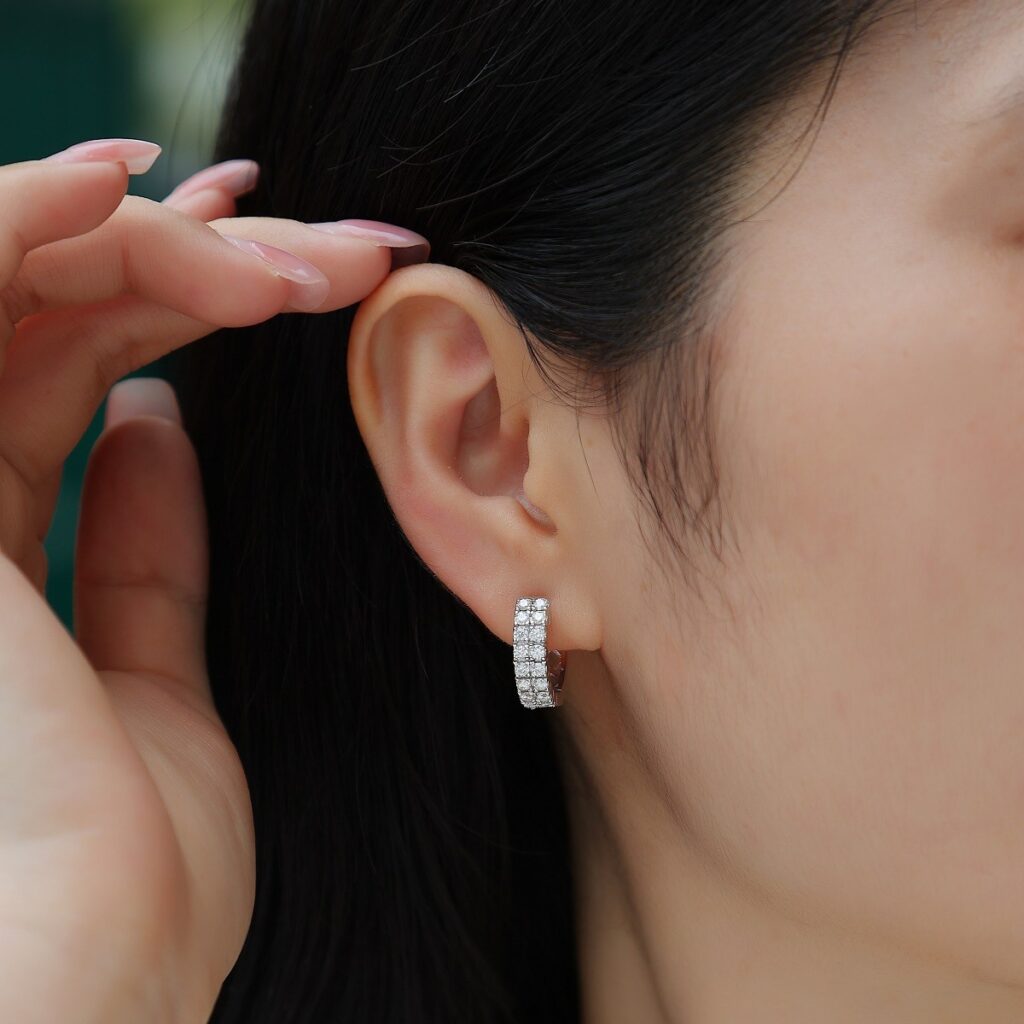Værdien af diamanter: Naturlig vs.. Lab-dyrket
Diamanter har længe været forbundet med værdi, status, og sjældenhed. Mens mange mennesker forbinder disse perler med kærlighed, jubilæer, og engagementer, Andre bærer dem som stilfulde symboler på deres succes. En gang udelukkende udvindes fra jorden, Diamanter kan nu også dyrkes i dedikerede laboratoriemiljøer. Men hvor godt har lab-dyrkede diamanter deres værdi over tid? Her er hvad du skal vide.

Hvad bestemmer diamantværdien?
Gennem århundreder, Diamanter har været fremtrædende symboler på prestige og rigdom. Imidlertid, Den faktiske monetære værdi af diamanter har svinget på grund af forskellige markedsfaktorer, inklusive udbud og efterspørgsel.
Svarende til guld, sølv, og platin, Værdien af en diamant stiger og falder baseret på dens efterspørgsel som en vare. For eksempel, Opdagelsen af nye diamantminer kan forårsage, at priserne falder på grund af en stigning i udbuddet. Omvendt, Når efterspørgslen efter diamanter stiger, Deres værdi øges.
Diamanter betragtes som en klog investering, fordi de generelt bevarer en konkurrencedygtig markedsværdi, der forbliver konsistent eller stiger over tid. Dette er hovedsageligt fordi der er en begrænset mængde naturlige diamanter på jorden. Hvis du køber en naturlig diamant til en rimelig pris og tager sig af den, Du kan forvente en gradvis stigning i dens samlede værdi.
Er lab-dyrkede diamanter en god investering?
Knaphed er en betydelig faktor, der påvirker et produkts værdi. Naturlige diamanter, at være relativt sjælden, har en højere værdi end lab-dyrkede diamanter, som ikke er mangelvare. Dette betyder, at deres videresalgsværdi er relativt lav sammenlignet med ædelsten, der er udvindet fra jorden.
Imidlertid, Lab-dyrkede diamanter tilbyder flere overbevisende fordele, der appellerer til moderne købere. Ud over at være identisk med naturlige diamanter, Disse menneskeskabte perler er skabt med ansvarligt fremskaffede materialer på en miljøvenlig måde.
Naturlige diamanter er undertiden forbundet med menneskerettighedsspørgsmål og økologiske bekymringer. I modsætning hertil, Lab-dyrkede diamanter er lavet i kontrollerede miljøer, Fjernelse af disse etiske spørgsmål. Lab -diamanter koster typisk også ved 30% Mindre end naturlige diamanter af sammenlignelig kvalitet og størrelse. For mange, Disse faktorer udligner bekymringer over deres begrænsede videresalgsværdi.

Er lab-dyrkede diamanter værdifulde?
Naturlige diamanter tager milliarder af år at danne under intensivt tryk og høje varme miles inden i jorden. Lab -diamanter, På den anden side, fremstilles relativt hurtigt ved hjælp af specialiseret teknologi. På trods af disse forskelle, Begge typer ædelsten er identiske på molekylært niveau. Den eneste forskel er, at lab-dyrkede diamanter inkluderer mikroskopiske inskriptioner.
Mens lab-dyrkede diamanter er de samme som udvindede diamanter på alle måder, Deres ubegrænsede udbud påvirker deres værdi. Dette er en del af grunden til, at lab-oprettede diamanter har set et fald i videresalgsværdien i de senere år.
Som med enhver værdifuld vare, Naturlige diamanter vil stige i værdi i overensstemmelse med inflationen. En diamant købt i 1980 er meget mere værd i dag. Hvorvidt denne stigning skyldes, at stenens eller inflationens sjældenhed eller inflation afhænger af faktorer som Gems unikhed, form, kvalitet, og farve.
I modsætning til naturlige diamanter, Lab -diamanter får generelt ikke værdi over tid. Deres værdi har ikke holdt op med inflationen, Oftest på grund af den øgede tilgængelighed af lab-dyrkede ædelstene. At sige det simpelthen: En lab-dyrket diamant vil sandsynligvis ikke bringe meget afkast på investeringerne. Imidlertid, Naturlige diamanter kan stige i værdi baseret på relativ knaphed og svingende markedets efterspørgsel. Stadig, Appellen til en smuk, Affordabelt laboratoriediamant opvejer ofte værdiforskiftet for mange.
Prisen på lab-dyrkede diamanter
I de senere år, Lab-dyrkede diamanter er blevet mere populære, fører til et fald i deres priser. Du undrer dig måske, øgede ikke forøgende efterspørgselspriser højere? Normalt, ja. Men med lab-dyrkede diamanter, Leverandører har øget produktionen som svar på højere efterspørgsel, forårsager priser til at falde. Dette giver forbrugerne mulighed for at opnå smukke diamantsmykkerstykker til lavere priser.
Det er vigtigt at huske, at en diamant kun er en del af det, der gør smykker værdifuld; Designens ædle metalindhold og unikhed bidrager også til den samlede prisfastsættelse.
Er lab-oprettede diamanter værd noget, når de videresælges?
Mens lab-dyrkede diamanter har set et fald i videresalgsværdien, Dette reflekterer ikke over kvaliteten af ædelsten. Lab -diamanter er billigere end naturlige diamanter ikke fordi de er lavere kvalitet, men fordi de er mere rigelige, og forsyningskæden er kortere.

Deres videresalgsværdi er muligvis ikke så høj som naturlige diamanter, Men det primære formål med at købe et fantastisk diamantstykke er ikke at videresælge det senere. I sidste ende, Du køber en elegant afspejling af din stil eller et meningsfuldt token af kærlighed, der kan blive en elsket arvestykke.
Den virkelige værdi af din diamant
Hvad gør en naturlig eller lab-diamant til en ædelsten til investeringskvalitet? Det er primært farven, skære, klarhed, og karatvægt. Jo højere en diamant rangerer i disse kategorier, jo større er dens monetære værdi nu og i fremtiden. Som køb af et køretøj, En diamants værdi kan afskrives efter det første køb. Imidlertid, At købe et smykkestykke af høj kvalitet og passe godt på det kan hjælpe med at bevare sin værdi.
I sidste ende, Den virkelige værdi af en diamant er, hvordan den repræsenterer din personlige historie. Uanset om det er en forlovelsesring eller et andet smykkestykke, Den følelsesmæssige betydning opvejer ofte monetære overvejelser.
